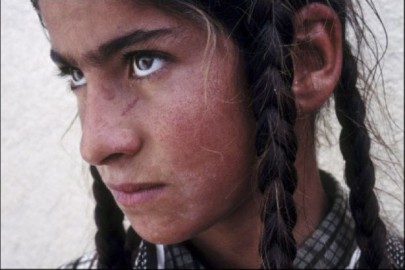The Yazidi people are a small religious minority, the most ancient religion in the world, though they currently number less than a million members worldwide.
A peaceful and non-aggressive people living in northern Iraq, Syria, Turkey and parts of Armenia and Georgia, they have quietly followed their faith for millennia; praying to Xude (God), and Tawsi Melek (the Peacock Angel – God’s representative to mankind).
The most important place on earth for Yazidis is Lalish, a mountain village in northern Iraq which is home to their holiest sites and also known as Hevini Ardi (Earth’s Heaven). Yazidis make pilgrimages there to visit shrines and pray.
Many years ago, most Yazidis used to live in Turkey. However, they couldn’t stay there anymore as the ongoing genocides against them made life unbearable. There were millions of Yazidis at the time, but most were killed or forced to convert. Consequently, they fled to neighbouring countries, most coming to Iraq, where they numbered almost 600,000.
The Yazidis were very poor, so they started farms and some started tending sheep until they could re-establish the lives they once had. However, former Iraqi president Saddam Hussein discriminated against them in many ways. He destroyed many of their villages in 1975, denying them food and aid afterwards. He forcefully conscripted many Yazidi men into the army for his war. Many of these men were killed and some disappeared, never to be seen again by their loved ones. Those families waited for them for a long time, in vain.
After Saddam’s regime was toppled in 2003, the Yazidis started to rebuild their destroyed villages with mud bricks, still struggling with poverty. It was difficult, yet they were happy. Some years passed, and they finished building their villages, finding a little happiness again in their newfound stability. Then, in August 2007, four trucks packed with explosives were driven into two Yazidi towns by Arabs and detonated. In that attack, 313 were killed and 700 wounded. The world at large didn’t seem to care about this attack – the criminals behind it were arrested and released shortly afterwards.
After all that, the blackest day for Yazidis in modern history began in August 2014, when Islamic State (ISIS) attacked the Yazidis in Shingal and surrounding villages, destroying many holy shrines as they went.
Those close to Mount Shingal had time to flee up its slopes, saving them from abduction by ISIS, but the ones who lived farther away were kidnapped. They took almost 4,000 Yazidi girls and women and forced them into sexual slavery. They also took 3,000 men and children. They separated them by age, killing the men and taking the children to their training camps to be brainwashed into ISIS soldiers.
They carried out these atrocities simply because Yazidis’ religion was different than theirs. We pass our religious traditions orally from generation to generation and are targeted because of our love for Tawsi Melek.
Today, almost 1,500 girls and women have been liberated, each with a different, heartbreaking story. Others are still held captive – sold, raped and tortured, in terrible conditions for almost four years now. At this time, 47 Yazidi mass graves have been found in Shingal. We may never know how many more are still out there. Someone’s brother, someone’s father, someone’s sister, someone’s mother – real people, not statistics.
Presently, thousands of Yazidis have been living in refugee camps for more than three years in Greece and in Kurdistan. There is no long-term solution in place for them.
We don’t know what the future holds for us. It hangs in the balance while the world looks on.
author: KHALAF DAKHEEL
The author is a Yazidi journalist.
source: jpost.com
Ask me anything
Explore related questions





